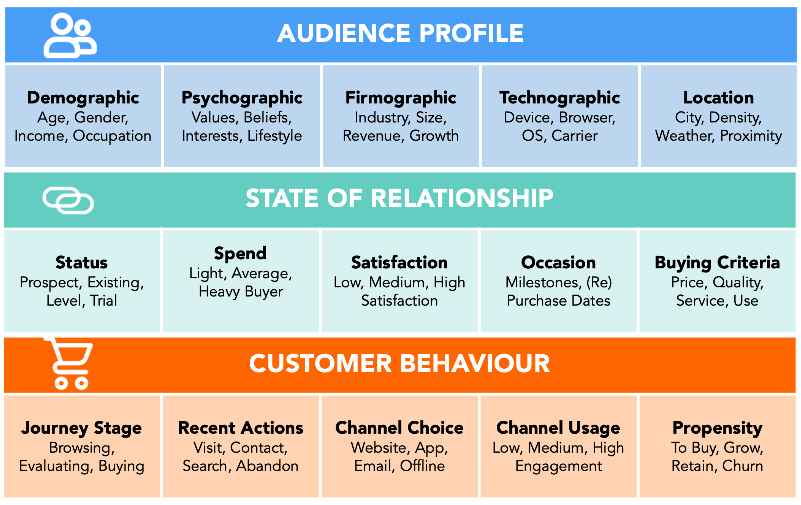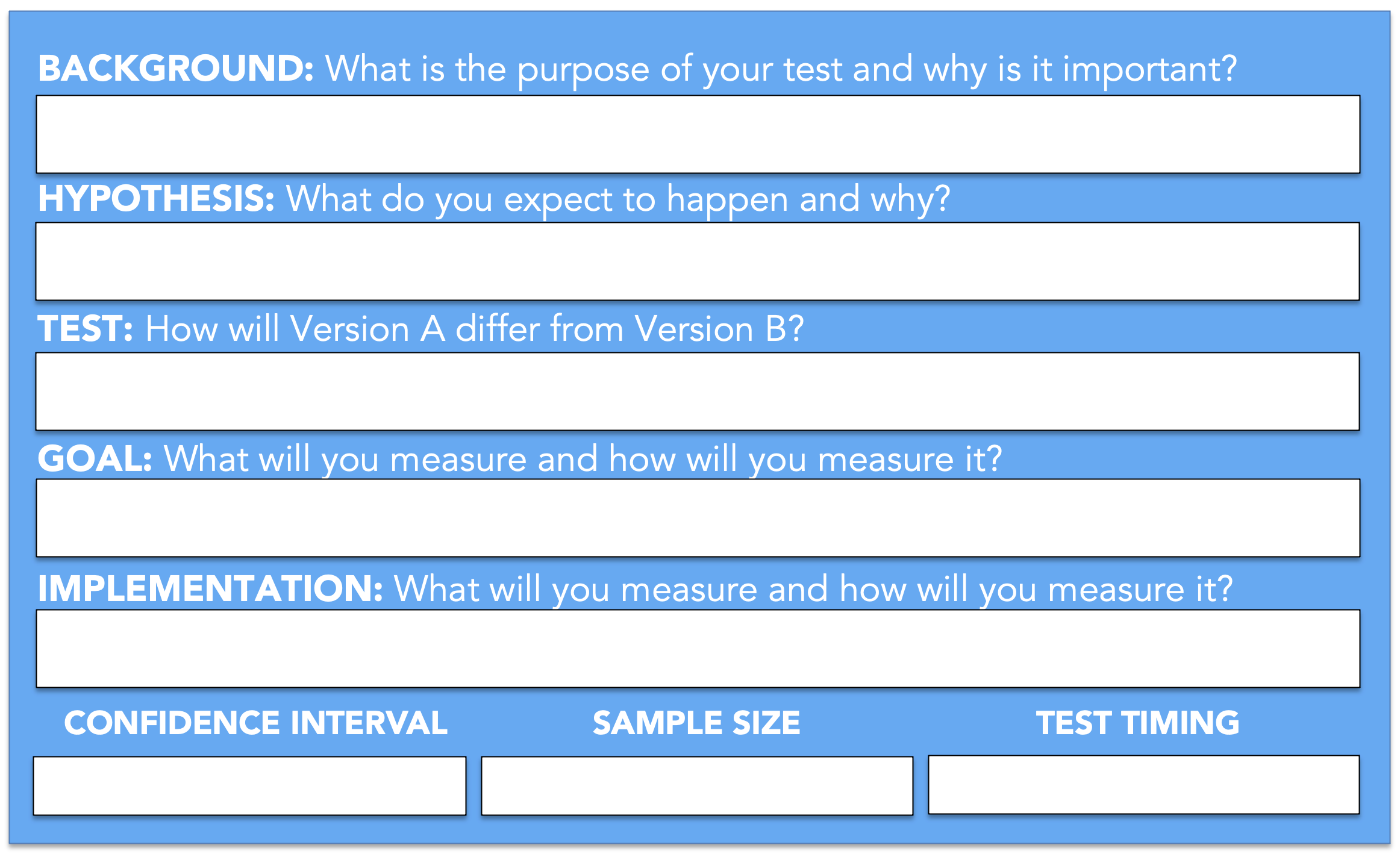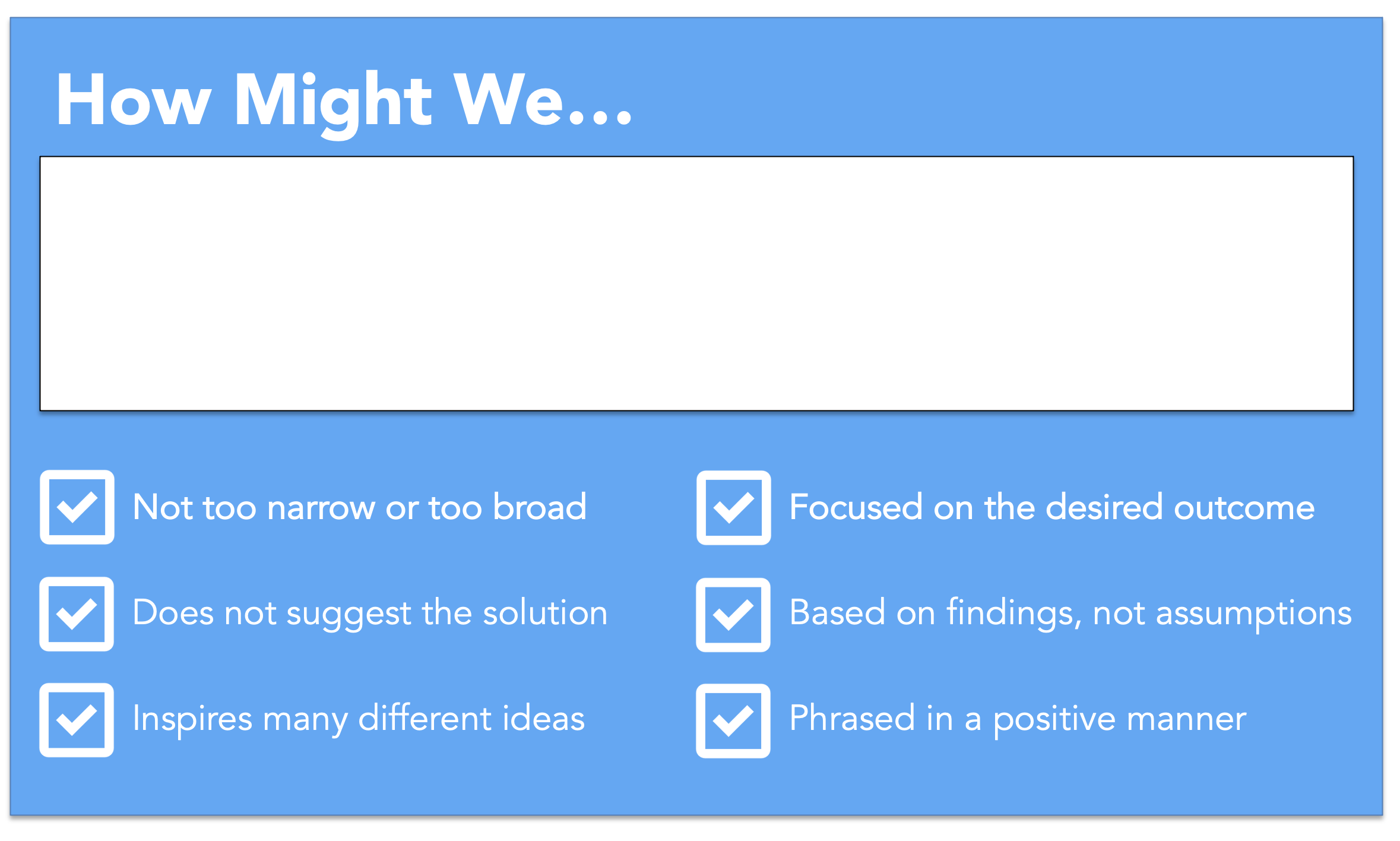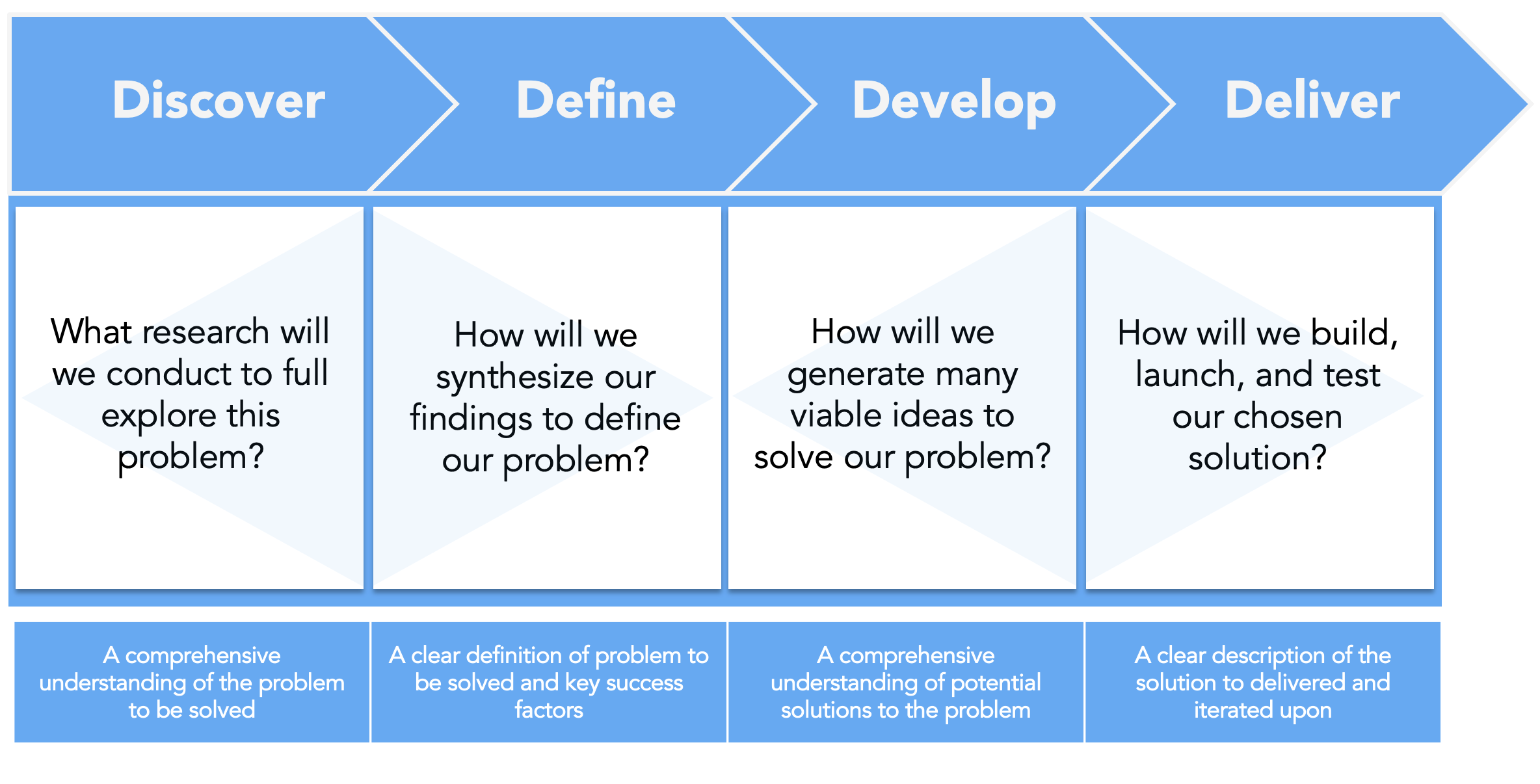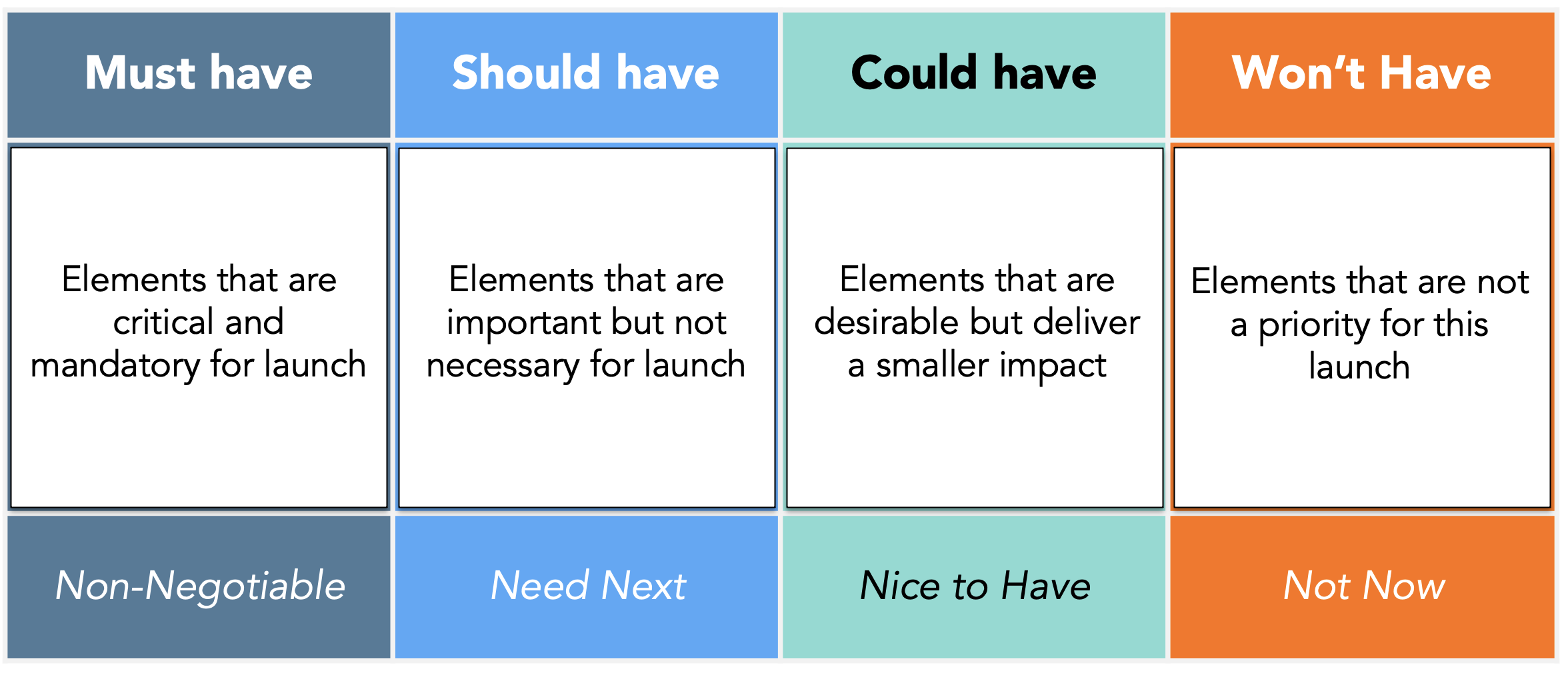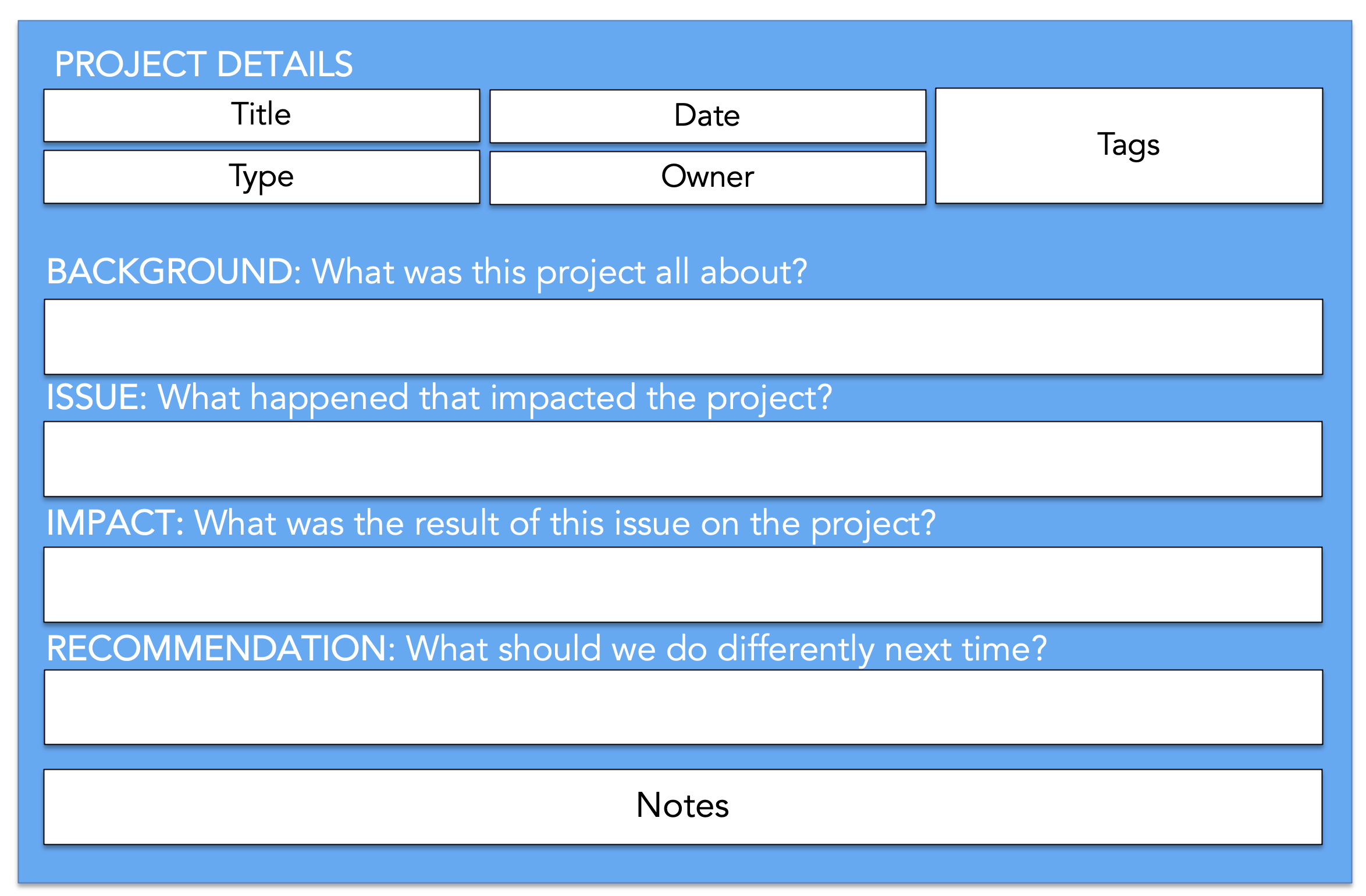Automated Campaign Workflow
Description
The purpose of the Automated Campaign Workflow is to design the sequence and logic for an automated marketing campaign. Automated campaigns are typically executed using email, sending messages to individuals based on specific triggers. Many marketers use automated campaigns to send different types of timely and relevant communication. For example, online retailers often send automated email campaigns to customers when they leave an item in their shopping cart. Sales teams also use marketing automation for drip or nurture campaigns with prospects. Marketers can set-up and run multiple automated campaigns at the same time, and include multiple messages, conditions, and logic branches. This framework can be used to help visualize the different elements and conditions of your automated campaigns, prior to implementation.
Question
What communication will be sent to customers as part of this automated campaign?
Steps
Determine the goal and target audience for your campaign. What exactly are you trying to accomplish? Who do you need to reach for this campaign, and how will you be able to identify them?
Determine the starting point for your campaign. This will be the Event that triggers the automated campaign to begin. The event needs to be measurable and align with your goals and target audience.
Identify the messages that you will sent to customers included in the campaign. These can include a series of different messages that may be broken up by time or based on customer response.
Create your workflow that illustrates the messages, conditions, and timing for your campaign. Consider where you can tag customers for further segmentation, and where to connect with other campaigns.
Determine the end point for your automated campaign. Review the workflow again considering your campaign goals, target audience, and internal capabilities. Make adjustments where necessary.
Considerations
Ensure that automated campaigns include overarching contact frequency rules to avoid over-communicating.
Ensure that your workflow can actually be executed given your resources and supporting technology.
Don’t go overboard with logic branches; each introduces an additional cost and risk for implementation.
Issue Tree
Issue Tree
The purpose of an Issue Tree is to illustrate the logical relationships between different elements of a problem. It is often used in management consulting to break down large, complicated problems into smaller and more manageable components. Issue Trees are also helpful in upstream marketing planning to clearly focus and prioritize those sub-issues that are impacting performance most. An Issue Tree is a diagnostic tool to help identify a root cause. Marketers can also use another version of this framework, called a Solution Tree. Instead of starting with a problem (the ‘Why’), marketers can start with an outcome (the ‘How’) to explore potential solutions. Both versions of this framework require you to fully explore the problem or solution in a way that is mutually exclusive, and collectively exhaustive (MECE).
Question
What are all of the reasons contributing to this problem?
Steps
Start by clearly identifying the single problem that you are diagnosing. What problem are you trying to solve? Capture this problem in the form of a clear and specific question, without any ambiguity.
Create your first set of Issue branches by identifying the highest-level Sub-Issues. Like all branches and Sub-Issues that follow, ensure that there is no overlap and that you are covering the whole problem.
Repeat Step 2 until you have reasonably exhausted all the Sub-Issues. Ensure that all Sub-Issues provide answers to the higher-level Issues to which they belong. You may end up having 4 or 5 levels of branches.
Validate your Issue Tree to ensure that you have covered the scope of your problem and that there are no breaks in your logic. The Sub-Issues in your final branch should be as measurable and observable as possible.
Finally, determine the type of analysis that can be performed to analyze each Sub-Issue. Prioritize those Bub-Issues that appear to be the most important to solving your problem and can be analyzed with the least amount of effort.
Considerations
Phrase your Issues and Sub-Issues in a way that can be proven and answered with a “Yes” or “No”
After completing an Issue Tree, consider building a Solution Tree to explore a specific Sub-Issue
A similar framework can be used to explore financial impact (Profitability Tree) and consumer insight (5 Whys)
Problem Definition Worksheet
Description
The purpose of the Problem Definition Worksheet is to define the fundamental problem that you need to solve and the important considerations for how you will solve it. The framework includes a set of questions that need to be answered and inputs that need to be provided before you can responsibly start an initiative. The Problem Definition Worksheet is helpful in your earliest conversations with clients and stakeholders to ensure that you are literally and figuratively on the same page. Once completed, the Problem Definition Worksheet is an excellent alignment tool to ensure that everyone has a shared understanding of the marketing mission. You can also return to the completed and approved Worksheet throughout your initiative to ensure that you are not veering off course.
Question
What problem do we need to solve and what do we need to know when solving it?
Steps
Work down the framework, and start by describing the Situation and Challenge. What factors are causing the current situation to be unacceptable? What needs to happen to make the future state acceptable?
Write a single Key Question that, when answered, will address your challenge. What is the fundamental problem that you are trying to solve? Be as clear and specific as possible to focus your team.
Capture your Success Criteria as the ultimate outcome you aim to achieve. Include targets that are measurable, if possible. You may also include client or stakeholder expectations if relevant.
Provide guidance for tackling the problem by providing In-Scope Constraints and Out-of-Scope items. Consider factors like available resources, upcoming milestones, parallel initiatives, and relevant regulations.
Finally, identify any other items that the team should know about when tackling the problem. What is not captured on the Worksheet that might help? Capture these as Considerations in the final row.
Considerations
This framework can be used for intake discussions, to triage marketing requests before work is started
Do not confuse this for a formal marketing brief, more details are required to start any creative work.
Do not assume that marketing is the best or only way to achieve this mission and make change happen.
Advertising Signals Framework
Description
The purpose the Advertising Signals Framework is to identify the moments when you would like to target your customer with relevant advertising. This framework is most useful for digital advertising, where marketers have the ability to target customers based on their behaviour and life stage. Marketers can use technology to recognize specific actions that customers take on their digital channels (e.g., abandoning a shopping cart) and respond accordingly. Marketers can also identify relevant customer triggers (e.g., contract expires in 30 days) and automate targeted campaigns. The Advertising Signals Framework helps marketers determine the signals that they can use to deliver more timely and targeted advertising campaigns.
Questions
What actions or triggers will we use for our targeted advertising campaign?
Steps
Determine the Customer and Context you are focusing on. Who do you want to target and what do you want to improve? Identify the Steps that a customer may need to take to achieve your conversion goal.
For each Step, identify your Goal—the action you want your customer to take to proceed towards conversion. Then identify the Moment when you feel you have the best opportunity to convince them to do so.
Review the Moment and determine if there are any observable actions or triggers that will indicate when it arrives. For example, a Signal for targeting a motivated customer might be when they add a product to a cart.
Ensure you can Recognize and action these Signals in a timely and accurate way. Describe how you will do so. For example, you might tag your shopping cart and include these users in a motivated audience segment.
Determine how you will Respond when this Signal is Recognized. What tactic will you use to motivate this customer to take action? For example, you might use a remarketing campaign for your motivated audience segment.
Considerations
Ensure what you are planning is feasible given its expected value and level of complexity to implement.
If you have completed multiple columns, ensure that each is distinct and requires its own campaign.
Multiple signals can be used within a single campaign, and some plans may not require multiple steps.
Marketplace Insight Map
Description
The purpose of the Marketplace Insight Map is to identify opportunities based on insights from your marketplace research. The framework allows marketers to organize findings and insights in a way that allows you to see larger themes and patterns more easily. The columns represent the high-level process of moving from research to analysis to ideation. The rows capture the different dimensions of your research based on the nature and scope of your marketing initiative. The framework can be used at the beginning of an initiative to plan your research, but is more useful to consolidate the resulting findings. The Marketplace Insight Map gives you a strategic through line that connects your research to recommendations.
Question
What opportunities do we see based on our marketplace research?
Steps
Identify the dimensions of your marketplace research that you will use to categorize your findings. These should have been determined when you created your original research plan. Capture these in the left-hand column.
Capture the findings from your research in the appropriate dimension. Describe these in a way that is as objective and factual as possible, without interpretation. Each finding should have a corresponding source.
Analyze your findings through the lens of your marketing initiative. What do we think this means? What is the potential implication for us? Capture your insights, and focus on those findings that feel most relevant.
Review your insights for clusters and patterns and try to synthesize. What larger trends are emerging? What insights feel the most useful to your marketing planning? Narrow down your list before identifying Opportunities.
Identify high-level marketing opportunity territories based on your prioritized insights. Describe these in a way that is directional, not specific. These Opportunities should help finding solutions, not be the solutions.
Considerations
The framework is a useful presentation tool to visualize how your recommendation is grounded in research
Each column represents a separate phase of work that needs to be completed before proceeding
Consider creating an Affinity Map to help you cluster your Insights before identifying Opportunities
Dashboard Design
Description
The purpose of a Dashboard Design is to structure the performance data you need to be able to understand your results and to take action. Your dashboard needs to be customized to the nature of your business and marketing activities, as well as the specific person or team that will be using it. Dashboards can be analytical, providing people with information and benchmarks to use for analysis and decision-making. Dashboards can also be operational, providing time-sensitive information for teams to monitor and actively manage marketing activities. Dashboards designed by marketers typically include performance data vs. targets (measures), and a breakdown of that data by different dimensions (metrics). This framework helps you to determine what is most important to include in your dashboard.
Question
What data do we need to include in our dashboard?
Steps
Who will be using this dashboard and what will they be using it for? Make sure that you have a clear answer to this question. If you have multiple audiences with different needs, you will need multiple dashboards.
For Measures, identify the quantifiable outcomes that your marketing program needs to deliver – including the associated targets. Measures are what your CFO cares about. For example, Sales vs. Forecast.
For Metrics, identify the more granular data that you need to be able to better understand your performance and make corresponding adjustments. For example, Sales per Day or Sales per Product.
Identify the sources of the data that you would like to include in your dashboard. Will it be possible to access this data in a timely, accurate, precise, and structured way? Vet for what is possible today vs. the future.
Finally, determine how often and in what format the audience needs to access this dashboard. For example, do updates need to provided daily or weekly? Plan for what is possible today vs. the future.
Considerations
Prioritize data ruthlessly based on how useful it is to decision-making; avoid including data that cannot be actioned
Establishing internal role-based personas can be helpful to design different versions or views of dashboards
Ensure that the data in your marketing dashboard supports and aligns with executive-level goals and scorecards
References
Knaflic, C. “Storytelling with Data: A Data Visualization Guide for Business Professionals”, Wiley, 2015
Audience Targeting Table
Description
The purpose of the Audience Targeting Table is to help marketers explore different attributes that may be used to create audience segments for marketing purposes. The Audience Targeting Table outlines the growing list of attributes and techniques that can be used by marketers to create more granular segments. This is particularly relevant for digital advertising, 1:1 messaging, and personalization. The attributes that you can use will depend on the data that you have available, the nature of your marketing plans, and your level of audience segmentation sophistication. This table is a reference resource, not a framework to be completed by a marketing team. It is most helpful when you are exploring how to create or refine audience segments, and identifying new sources of data or models.
Question
What are the different ways that we can create audience segments for marketing?
Steps
When exploring new audience segments, be pragmatic. Avoid the urge to create a large number of micro-segments that are impractical to manage and use. Stay on track by asking the following questions:
Is this segment valuable? Every new segment that you create requires additional investment. Be sure that it is worth your time and resources required to create, manage, and communicate distinctly to this group.
Is this segment different? The purpose of segmentation is to identify audiences that are different, that you will engage with differently. Your segments need to be unique in a way that your marketing needs to address.
Is this segment distinguishable? While you may have a customer persona in mind that you would like to engage, you need to be able to have access to the data and models to accurately identify them. Do you?
Is this segment large enough? Marketers need to balance the desire for targeting more granular audiences with the resources required to manage more targeted campaigns. Does the size justify the cost?
Considerations
Consider creating a version of this table that reflects your current audience segmentation data and models
Make sure to capture the data or models that you would like to have when reviewing this table
Keep an audience segmentation list up to date that reflects your current segments and audience count
A/B Testing Template
Description
The purpose of an A/B Test is to compare the performance between two different versions of a marketing tactic. The A/B Testing Template allows you to clearly capture the critical elements of your test prior to execution. It also forces you to consider why a potential A/B test is valuable and what you will do if the result of your test supports your hypothesis. A/B Testing (also known as Split Testing) is an increasingly popular method to make incremental improvements to advertisements, websites, and other customer touchpoints. Marketers now have the opportunity to run several A/B tests, often at the same time. Using a common A/B Testing Template can help teams to clarify strategic and operational details.
Question
How are we planning to execute an upcoming A/B Test?
Steps
To plan an A/B Test, you need to first have an understanding of what you want to improve and how you might improve it. Capture these background details and explain why the A/B test is worth investing in.
You likely have a Control (existing Version A) and a Challenger (modified Version B) that you are testing. Write a hypothesis for your test by explaining why you expect the Challenger (Version B) to “win”.
Document your test by describing your independent variable (what is being changed) and your dependent variable (what is being measured). How will your Version A be different than your Version B?
Capture what and how you will measure the difference in performance between Versions A and B. This metric should relate back to your original reason for investing in the A/B Test. What are you trying to improve?
Finally, capture how you will execute the test and the actions you will take based on the results. This is a useful litmus test for value; if there are no specific actions coming out of this test than it is likely not worth doing.
Considerations
Make sure that you are not running too many A/B tests concurrently that may impact your results
Only run A/B tests if you can realize the sample size required for your confidence level (it may be challenging)
Continue to review trends in your marketing performance data to identify opportunities for new A/B tests
Reference
Bland, D., Osterwalder, A., “Testing Business Ideas: A Field Guide for Rapid Experimentation”, John Wiley & Sons, Inc, 2020
Customer Scenarios
Description
The purpose of a Customer Scenario is to describe how a new product, service, or feature will work through a fictional story about the person experiencing it. The Customer Scenario takes place in the future, and brings to life the benefits of new concepts and features in a compelling way. Final scenarios can be produced through sketches, storyboards, mock-ups, and videos but need a great script to start with. The best Customer Scenario scripts feature people acting in a natural way, showcase the most important features and benefits, and dramatize the future state in a way that is appealing. This framework helps you to create a script that aligns customer needs, key features, and business goals.
Question
How could this concept or feature come to life for a customer?
Steps
Start by clearly defining what you are trying to demonstrate. If you are using customer scenarios as part of a pitch or presentation, what is the most important thing that your audience needs to see and understand?
Identify the most important features and related benefits that need to be included in your customer scenario. What does your audience need to see the customer in the scenario use or interact with?
Identify the types of customers and situations where your new product, service, or feature will be most valuable. Who are you targeting and when would they find it appealing? This is the starting point for your story.
Create a first draft of your scenarios for each persona and context. Try to naturally weave features and benefits into your story in a way that does not feel forced. Make sure to have a logical beginning in end.
Review your first draft so that your overall story is clear, your important features are incorporated, and your target personas and contexts are covered. Refine to add drama to your script, while retaining feasibility.
Considerations
Imagining future state customer scenarios can also be used to identify new products, services, or features
Stitching different scenes together can highlight challenges and opportunities for delivering a connected experience
Incorporate gaps in time (e.g., 7 days later) and assumptions (e.g., persona downloads app) to bridge scenes
References
McKee, R. “Story: Style, Structure, Substance, and the Principles of Screenwriting”, Harper Collins, 1997
How Might We Question
Description
The purpose of a How Might We question is to frame a problem in a way that helps teams focus and identify many possible solutions. How Might We is a staple of the design thinking process which focuses on creating innovative solutions through empathy, collaboration, and iteration. How Might We questions are used as a launchpad for brainstorming ideas at the beginning of a design phase. By reframing known challenges as questions, teams are free to explore without judgement. Using the language of “How Might We” rather than “How Can or Should I” makes the ideation process more open and collaborative.
Question
What problem are we trying to solve?
Steps
Start by establishing an understanding of the core challenge or opportunity you intend to explore. Review research that helps to paint a full and accurate picture of the underlying problem you are trying to solve.
Begin writing many different versions of How Might We questions based on your understanding of the problem space. Stop once you have exhausted all reasonable options. You now have your potential questions.
Review your potential questions for aperture. Remove or revise those that are so narrow that they will overly-constrain ideation, and those that are so broad that teams will be unable to manage scope.
Review your potential questions for focus. Remove or revise those that may be tangential or do not focus on the outcome that you are driving towards. Be careful not to bake in a solution into a question.
Finally, review your more qualified list of potential questions and select the one that will focus your team and inspire the most creativity. Refine the phrasing of the question to be as clear and compelling as possible.
Considerations
It is helpful to develop a How Might We question as a team, particularly when the problem space is new or fuzzy
Phrasing questions in a positive way that describes the desired outcome is more inspiring than negative phrasing
Ensure you have completely aligned on your How Might We question before you move into brainstorming
References
The How Might We process is credited to Min Basadur and has been popularized by IDEO
Double Diamond Design Process
Description
The purpose of the Double Diamond Design Process is to plan how a new product or service will be created, from start to finish. This process describes how teams must diverge at certain points to explore findings and potential solutions. At other points, teams must converge to define a problem and identify the solution to create. Convergence is visualized by the widening of the diamonds, divergence by narrowing. The output of one phase is the input to the next phase. Most marketing teams and agencies have their own proprietary processes that reflect these phases. Regardless of your process, it is critical to establish an overall plan upfront for new projects to align and orient teams throughout.
Question
What process are we following to create our solution?
Steps
To start, make sure that you have clearly documented the goal, scope, and other important considerations relating to the project you are planning for. Try not to be too confining or prescriptive.
Capture the tasks that you will conduct as part of your Discover phase. This likely includes a mix of research activities. What will you do to fully understand the problem and not proceed with assumptions?
Capture how you will synthesize and use the findings from Discover in your Define phase. This likely involves clustering your findings into themes to help narrow down your core problem to be solved.
Capture how you will generate ideas for potential solutions to your problem in your Develop Phase. This likely involves a mix of brainstorming and ideation activities. Involve diverse participants for a broader range.
Determine how you will choose and develop a solution from Develop in the Deliver Phase. If you are planning to release and iterate on an early version of the solution, make sure to capture these steps.
Considerations
When starting a new phase, make sure everyone is clear you are transitioning between divergent and convergent thinking
Projects with a tight scope will require less divergent activities than those that are less defined
Deliver does not necessarily mean done; capture how your solution may be tested and optimized over time
References
The Double Diamond was popularized by the British Design Council
The visual divergence-convergence model is credited to Bela Bethany
MoSCoW Analysis
Description
The purpose of a MoSCoW Analysis is to prioritize the requirements to be included as part of a release. MoSCoW refers to the four categories included in the analysis: Must-Have, Should-Have, Could-Have, and Won’t Have. MoSCoW was originally used for managing requirements for software, but the method has been adopted more broadly by marketing teams for initiatives with a fixed launch date. MoSCoW helps teams to prioritize elements based on the goals of the initiative and align on a feasible scope. The method can be used over time to manage ongoing releases as prioritization criteria may evolve and new requirements may be identified.
Question
What will we include as part of this release or launch?
Steps
Bring together your stakeholders and ensure that everyone is clear on the requirements that are being considered and aligned on how the requirements will be prioritized. Now start prioritizing using MoSCoW.
Must-Have requirements need to be included in your release. These elements are critical to the success or function of the product or initiative. If you cannot move forward without it, the requirement is a Must-Have.
Should-Have requirements are of high value for the project, but the project will not fail or the product will not be unusable if the requirement is included. Should-Have requirements are critical to include in a future release.
Could-Have requirements provide less value for the project than Should-Have requirements, and are not fundamental to the product or initiative itself. These will only be included once Should-Haves have been delivered.
Won’t-Have requirements have the lowest value for the project and will not be included in the launch or release. This category is also referred to as ‘will not have this time’, as they may be delivered in the future.
Considerations
Ensure that requirements are captured in a clear and consistent way for stakeholders to have a shared understanding
Ensure that your MoSCoW results are actually feasible given the resources and time that you have available
Establish a clear and objective way to distinguish Should-Have and Could-Have, which can be challenging
References
The MoSCoW is credited to Dai Clegg
Lessons Learned Library
Description
The purpose of a Lessons Learned Library is to capture and share actionable learnings from marketing initiatives. While the framework here illustrates a ‘lesson learned’ from a single initiative, the real value comes from organizing a growing number of lessons in a structured and centralized way. A Lessons Learned Library can become an increasingly valuable resource for marketers to refer to when planning new initiatives. Lessons can be captured when initiatives or experiments end (as part of a Retrospective Meeting), or when issues unexpectedly arise. Marketing teams need to have the discipline and structure in place to capture and codify lessons consistently as part of their regular operations.
Question
What have we learned before that might help us know?
Steps
Start by documenting the details of the project that your lesson relates to. Pay attention to the tags used to categorize your lessons. What tags will be most clear and helpful when searching?
Capture the background of the project to provide valuable context for your lesson. What would someone new to your team need to know to fully understand the project, situation, and lesson?
Capture the issue that impacted your project. This might be a specific marketing decision, experiment, or event. Make sure that this is an issue that may be encountered in the future.
Capture the result that the issue had on the project. This may be an unexpected positive or negative outcome. Try to quantify the impact, and make sure that it is material to your business.
Finally, capture what you would do differently the next time this issue arises. What did you wish you knew before this project began? Make sure that your recommendation is specific and actionable.
Considerations
Consider using software to centrally manage how lessons are uploaded, tagged, and searched
Consider incorporating a ‘Lessons Learned’ section in your briefs to highlight relevant recommendations
Monitor the Lessons Learned Library over time to ensure that it is being regularly populated and used
References
Bland, D., Osterwalder, A. “Testing Business Ideas: A Field Guide for Rapid Experimentation”, Wiley, 2019
Jobs to Be Done
Description
The purpose of the Jobs to Be Done framework is to identify the underlying reason why a customer chooses a product or service. The framework is based on the concept that customers “hire’ a product or service for a specific “job”. Jobs to Be Done was popularized by Harvard Business School professor Clayton M. Christensen as a way to explore disruptive innovations. The framework can be used by marketers to better understand the goals of customers, which can then inform and align product and communication strategy. The Jobs to Be Done framework can also help marketers better understand competitors outside of their immediate product category and identify new or underserved customer needs to explore.
Question
What “job” are customers “hiring” this product or service for?
Steps
Customer research is the first step. Design your research to observe people in relevant natural situations. Probe for reasons why a product was chosen, when the need arose, and what alternatives were considered.
Codify your findings using the framework. Start by describing the situation that leads to the “job” in the first place. What is the trigger or the set of circumstances that leads the specific customer need?
Capture the underlying motivation for the “job”. What is the customer trying to achieve or resolve in this situation? Write all of your sections in the first person as a customer, and start this section with a verb.
Capture the ultimate outcome that the customer is aiming to realize by “hiring” a product or service. What needs to happen for the “job” to be completed successfully? Write this section in a way that it can be measured.
Jobs to Be Done are not only functional, but they also have an emotional dimension. How will the customer feel after they successfully complete this “job”? Capture these emotions as specifically as possible.
Considerations
Use your Jobs to Be Done to explore the broader competitive defined by “jobs”, not by customers or products
Make sure to recognize if you uncover multiple Jobs to Be Done, and document them separately
Focus on which Jobs to Be Done are under or over-served, and how well your current offering aligns
References
Christensen, C.M., Hall, T., Dillon, K., Duncan, D. “Competing Against Luck: The Story of Innovation and Customer Choice”, Harper Business, 2016
Value Proposition Statement
Description
The purpose of a Value Proposition Statement is to articulate why a customer should choose your offering over alternatives. These statements are fundamental to marketing planning as they clarify the target customer, product category, competitive advantage, and ultimate customer benefit. Value Proposition Statements should not be confused with positioning copy or advertising taglines. Rather, Value Proposition Statements are a critical input to the development of effective marketing communications. Strong Value Proposition Statements are clear, concise, compelling, and difficult for competitors to replicate. While these statements may appear aspirational for your organization, they need to be grounded in deep understanding of your customer, business, and marketplace.
Question
What exactly are we offering and why should a customer choose it?
Steps
Start by describing your target customer as specifically as possible. While you might sell to others, describe the customer that the product has been designed for. Who will find your product most valuable?
Now describe the underlying pain point or need that will motivate your target customer to consider your product. The most successful products address common, urgent, and unaddressed needs and desires.
Write down the name of your product and consider the category that it belongs to. As unique as your product may be, it is important for customers that are unfamiliar with you to have a frame of reference.
Now define your primary customer benefit. This benefit needs to address the customer need or opportunity captured in Step 2. Capture what your product uniquely provides, not a list of product features.
Finally, capture your primary competitors or alternatives. You can describe these other products as a common group for brevity. Identify the most important way your product is different and better for customers.
Considerations
Avoid starting with the features of your product and backing into the associated needs of your customer
Avoid the trap of considering your product as one-of-a-kind when identifying the category it belongs to
Avoid the tendency to use creative language or buzzwords; make your statement clear, accurate, and specific
References
Moore, G. “Crossing the Chasm: Marketing and Selling Disruptive Products to Mainstream Customers”, Harper Business, 1991
Think, Feel, Say, Do Framework
Description
The purpose of the Think, Say, Feel, Do Framework is to identify the desired outcome of a marketing initiative from the perspective of a customer. This framework relates to the Empathy Map originally created by Dave Gray. It can be used by marketers when planning a campaign or writing a creative brief to describe the ‘gap to be closed’ in a more relatable and human way. The categories of think, say, feel, and do cover different facets that both motivate and describe customer behaviour. This framework can help marketing teams to identify more granular customer-focused objectives and metrics, and develop more empathetic marketing solutions.
Question
How do we want our marketing initiative to impact our target customers?
Steps
Define the scope of the marketing initiative that you are exploring and the profile of the customer you are targeting. If you have multiple target customer profiles, you will need to create multiple frameworks.
Describe the current state of how your target customer thinks (impressions), feels (emotions), says (expressions), and does (actions) relative to your marketing initiative. Use valid customer research.
In the row below, describe the change that you would like to see as a result of your marketing initiative. While some columns may be more relevant to what you are trying to accomplish, complete them all.
Review the results through the lens of your marketing initiative. Revise any changes that are desirable but beyond the scope of your initiative. Highlight those changes that are the most important for you to achieve.
Use the completed Think, Feel, Say, Do framework as an input to your marketing planning. Reflect the customer-focused changes you are trying to achieve in the success metrics of your creative brief.
Considerations
Use actual customer research such as customer interviews and surveys to eliminate bias or assumptions
When completing the framework, look for gaps or questions that require additional customer research
Use the Think, Feel, Say, Do framework in conjunction with empathy maps or customer personas, where available
References
Stakeholder Matrix
Description
The purpose of the Stakeholder Matrix is to identify different stakeholders according to their level of influence on a decision or project. The matrix is frequently used by B2B marketing and sales teams to map the different individuals, roles, or teams involved in a purchase decision. This framework is often developed in conjunction with customer or buyer personas. The matrix helps you to determine who has the most influence so you can focus your marketing and sales activities accordingly. The framework also allows you to identify the ways that different stakeholders are connected and may influence each other. Once completed, marketers can then use the framework to develop a plan to engage influential stakeholders in an effective and coordinated way.
Question
Who has the most influence in making this purchase decision?
Steps
Define the nature of the organization that is making the purchase decision - your target client account. If the stakeholders or decision-making process varies significantly among organizations, you will need separate frameworks.
Identify all of the stakeholders that exist with your organization that may influence the purchase decision. For large organizations, group stakeholders with common roles and levels of influence together as a single stakeholder.
Place each stakeholder in the appropriate place within the matrix. Stakeholders with high influence can approve or veto a decision independently. Stakeholders with high interest will be impacted by the decision the most.
Identify the relevant relationships that exist among stakeholders. Focus on who has the most influence on the decisions of others, regardless of where they may be in the matrix. Use arrows to illustrate ‘who is influencing who’.
Review the completed matrix and determine how you will engage different stakeholders. You will focus most of your marketing and sales activity on those that have the most influence, while remaining engaged with others.
Considerations
Organizations change over time, so make sure to update your matrix to reflect relevant changes.
For specific accounts, consider adding notes for each stakeholder indicating their current attitude towards you
Make sure to create customer or buyer personas for those stakeholders that are the most influential
References
The Stakeholder Matrix is also referred to as the Power-Influence Matrix, attributed to Aubrey Mendelow
Johnson. G., Scholes, K., “Exploring Corporate Strategy”, Prentice Hall, 1999
Profitability Tree
Description
The purpose of a Profitability Tree is to understand how different revenue and cost factors impact the profitability of your organization. While this framework is commonly used in business management consulting, it is also helpful for marketers. A Profitability Tree can help marketers to visualize the different inputs and levers that, together, determine profitability. While marketing is often focused on increasing revenue, there are a number of ways that new technologies, processes, online services, and digital channels can contribute to cost savings. This framework can be particularly useful at the beginning of a planning process to align your team on those priority areas that will have the biggest impact on your profitability. You can then identify ways that your marketing investments, programs, and decisions can positively impact revenue and costs.
Question
How is our investment in marketing expected to impact our profitability?
Steps
Work from left to right, starting with Revenue. List the main components that determine your revenue as your first-level branch. These will be a version of quantity and revenue per customer, customized to your business.
Now complete your first-level branch from your Costs. These will be a version of Variable costs (do change with production) and Fixed Costs (do not change with production), customized to your business.
Review each component in your first-level branches and ask how you could improve it. Capture these opportunities as new branch levels, making sure that each component is mutually exclusive.
Repeat Step 4 until you have reasonably exhausted all of the ways that you can improve your revenues and your costs. Your Profitability Tree may end up having 4 or 5 levels of branches.
Finally, validate your Profitability Tree with your team. For even small teams, this likely includes reviewing the framework with several people representing the revenue and costs sides of your business.
Considerations
Marketers need to prioritize those branches that will make the biggest impact and inform their marketing plans
Profitability Trees can used to onboard new agencies and team members by visualizing priorities and the big picture
Make sure to update your Profitability Tree as your business performance and operations change over time.
Pivot or Persevere Meeting
Description
The purpose of a Pivot or Persevere Framework is to help determine how you will potentially adjust your marketing program based on performance results at a specific time. The pivot concept was popularized by Eric Reis in his book The Lean Startup. Pivoting refers to a course correction designed to test a new fundamental hypothesis about a product. The concept can also be applied to large and long-term marketing programs where marketers have the opportunity to make adjustments. The framework is based on the scientific method of hypothesis testing, and it helps marketing teams to bring more structure and data to decision making. This framework is designed for the Pivot or Persevere Meeting, it assumes that you have identified your hypothesis and targets first.
Question
Do we need to adjust our approach based on the results we are seeing?
Steps
Identify the hypotheses that underpin your marketing strategy. These are the assumptions that you are making that are reflected in your plans and expected results. What do you expect to happen?
Determine how you will test your hypotheses and collect the necessary performance data or feedback as part of your marketing program. How will you test and measure if your hypotheses are correct?
Identify the date or milestone that you will use to schedule or trigger your Pivot or Persevere Meeting. Determine the specific targets or feedback you will use at this point to evaluate performance.
During your Pivot or Persevere meeting, review your original hypothesis and targets compared to the actual results. Discuss your learnings and decide if you will adjust (Pivot) or stay the course (Persevere).
If you plan to Pivot, capture the actions that you will take to adjust the marketing program. These actions may include pausing or stopping the program, or changing direction based on a revised hypothesis.
Considerations
Make sure you schedule your meetings far enough out so that you have statistically significant results
Only use this approach for marketing programs where you have enough time and resources to make adjustments
Make sure that your team is committed to the results and the process, even if original hypotheses are not supported.







